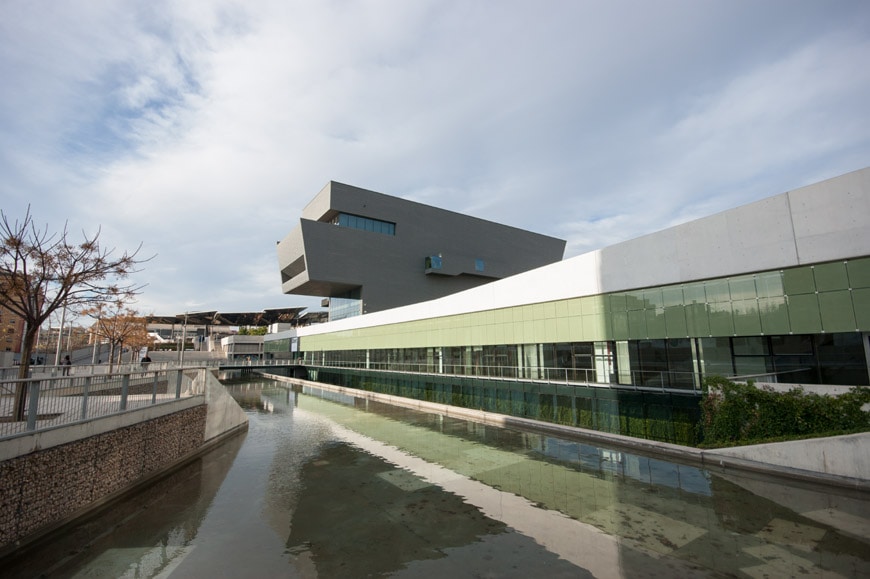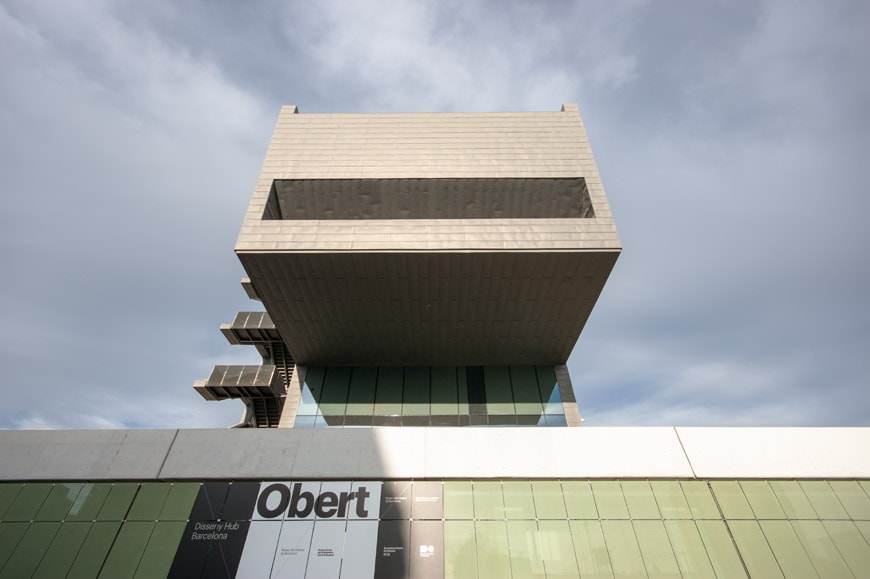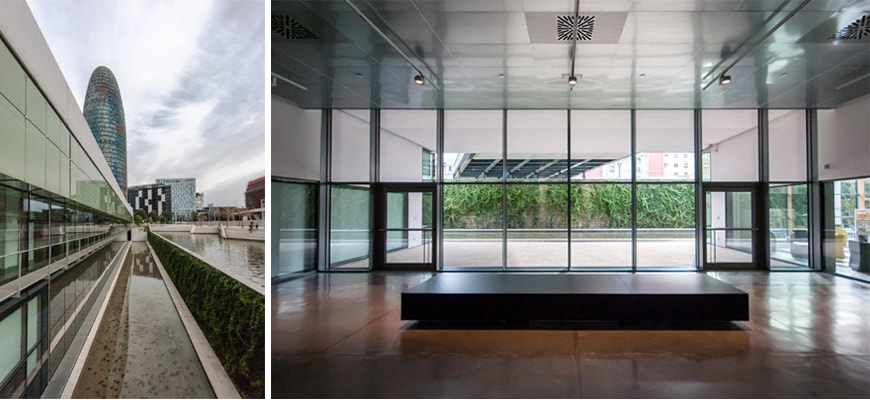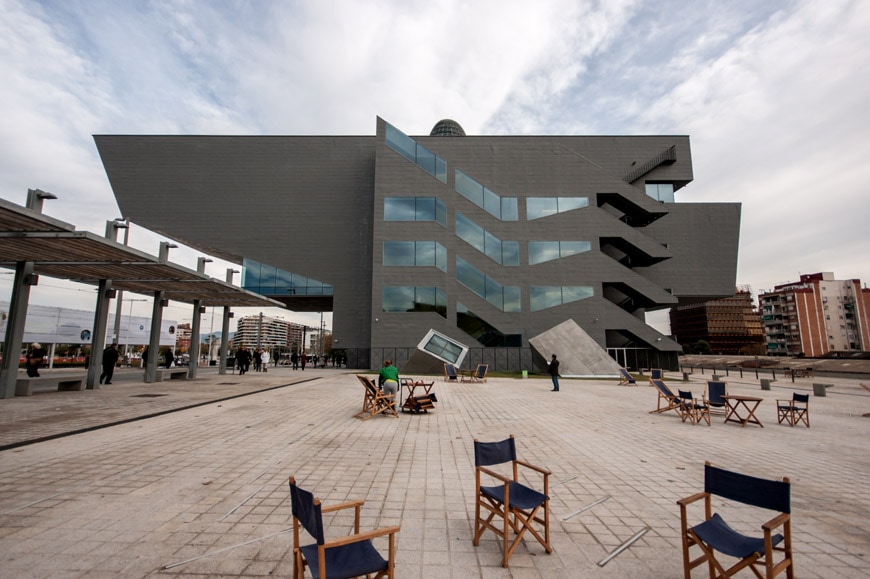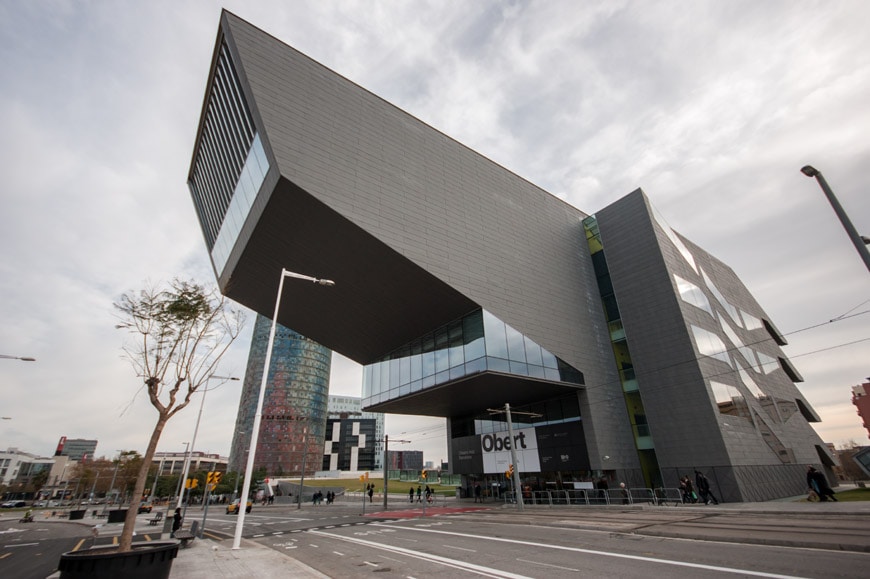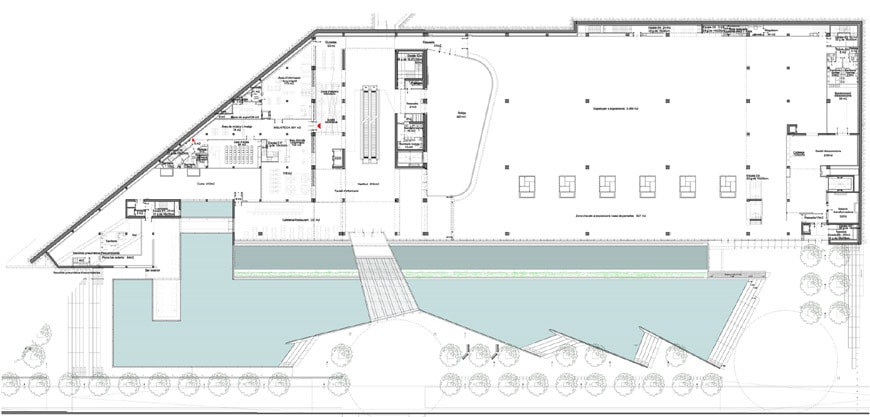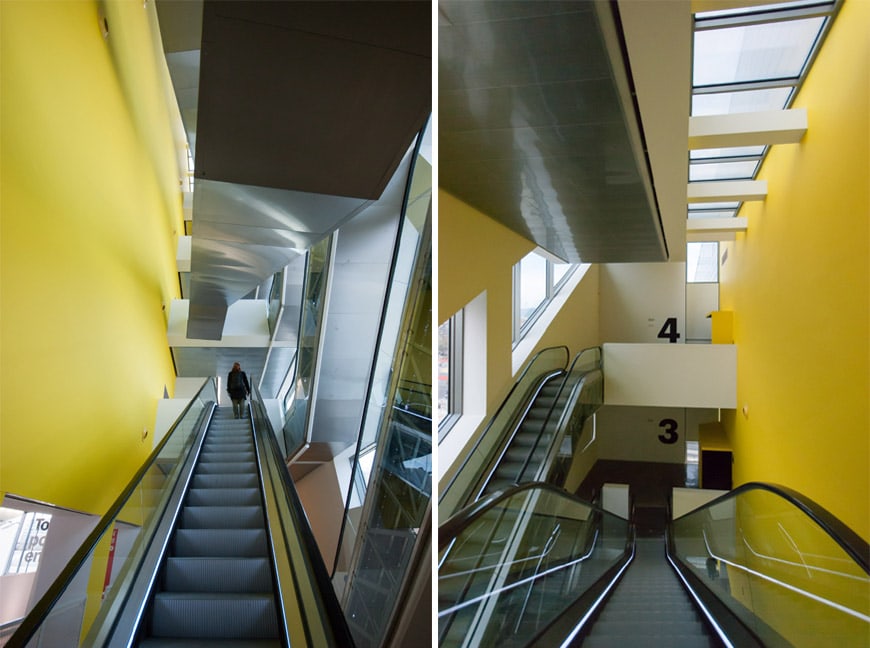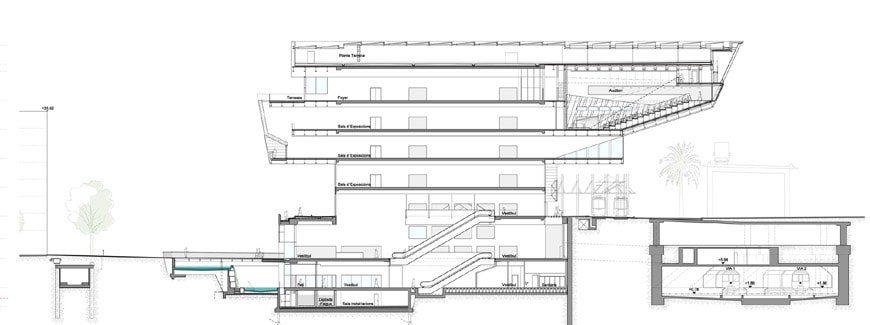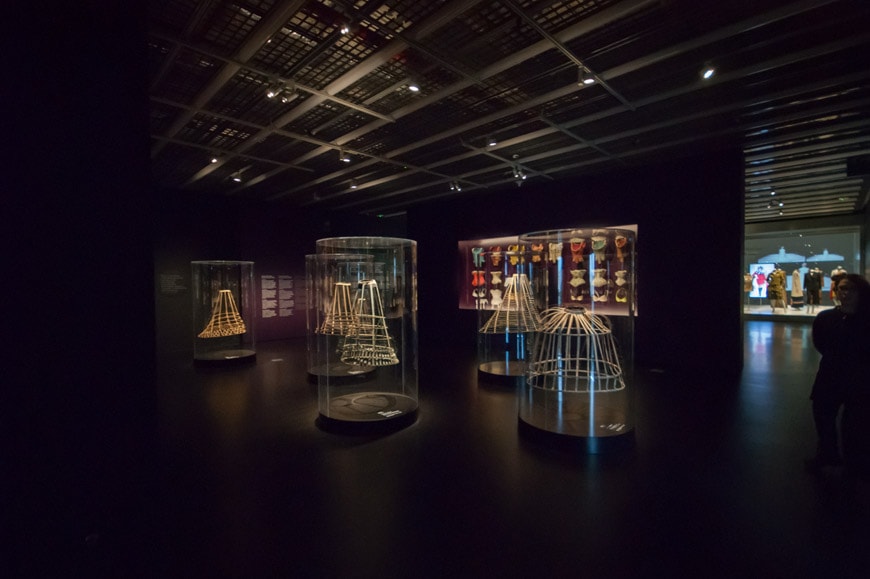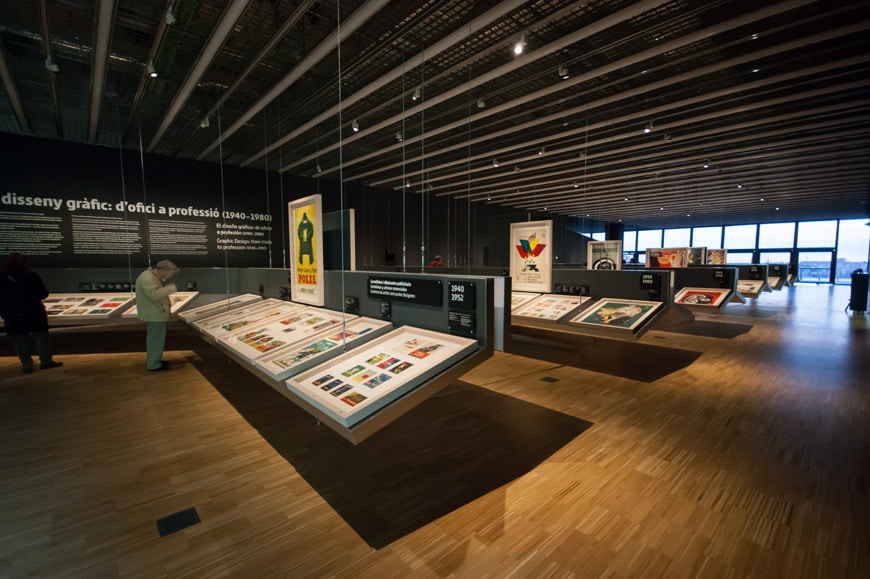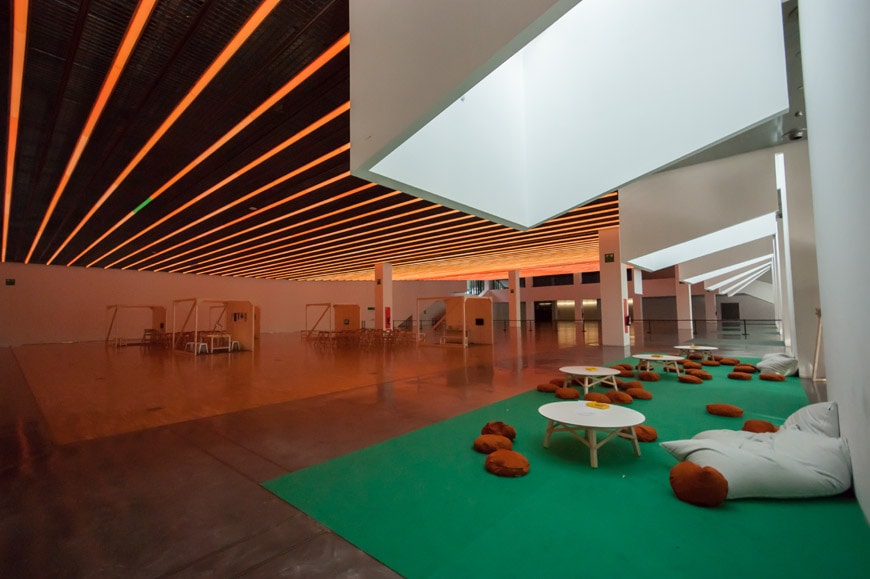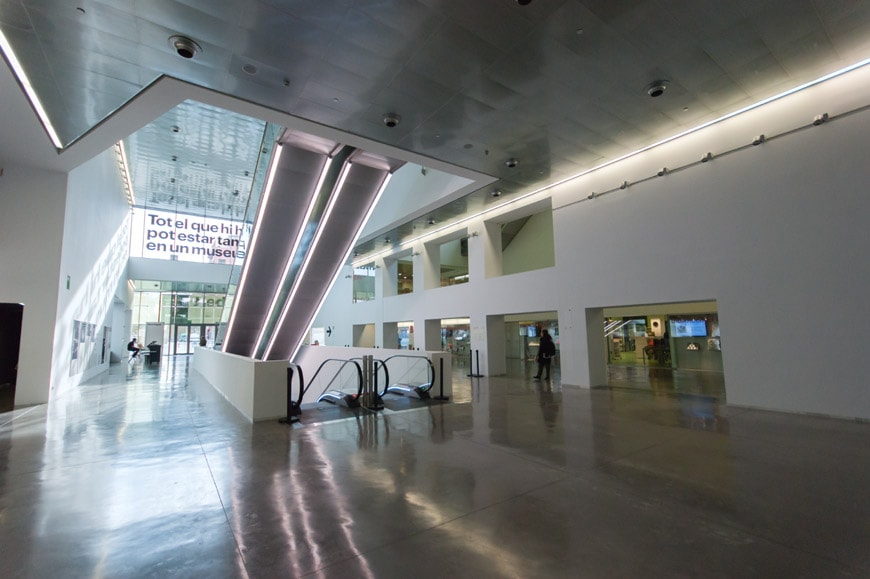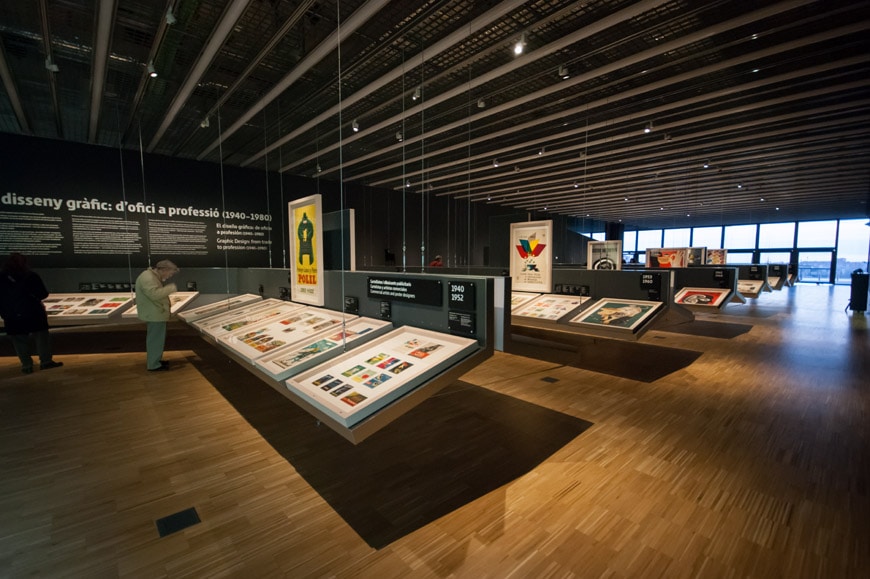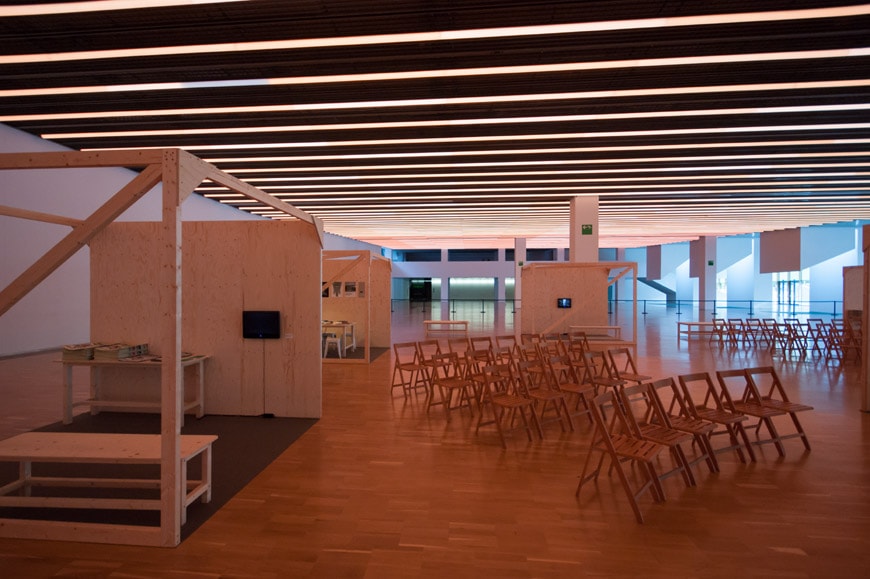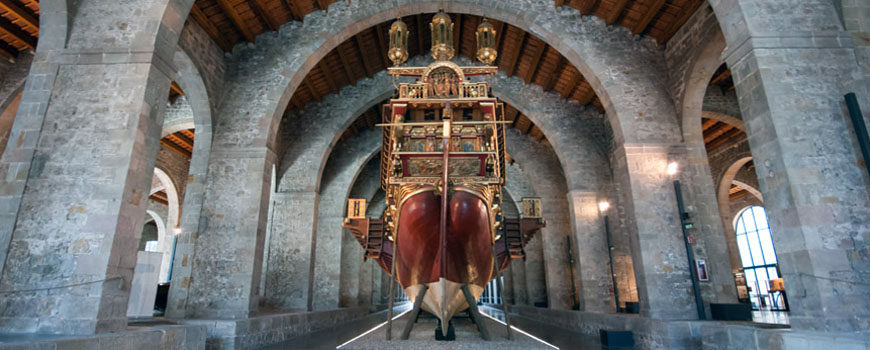Museu del Disseny, The Design Museum of Barcelona
Catalunya, Spain
Phone: +34 93 256 68 00
Website: https://ajuntament.barcelona.cat/museudeldisseny/en
How our readers rate this museum (you can vote)
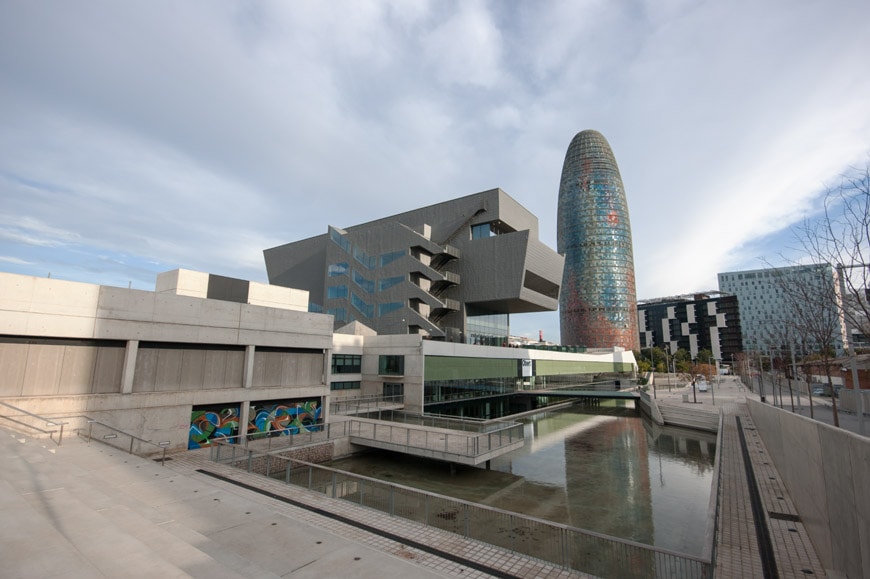
The Museu del Disseny is the most important museum in Barcelona dedicated to design, fashion, and decorative arts.
Opened on December 14, 2014, the museum is housed in the Edifici Disseny HUB, an iconic building designed by MBM Architects and located on the Plaça de les Glòries Catalanes square.
The collections of the Museu del Disseny were previously stored in four different museums: the Museu Tèxtil i Indumentària (Museum of tissues and dresses), the Museu de Ceràmica (Museum of ceramics), the Museu de les Arts Decoratives (Decorative arts museum) and the Gabinet de les Arts Gràfiques (Gallery of Graphic arts).
The permanent exhibition of the museum is divided into four thematic sections, each located on a different floor level: industrial design, decorative arts, fashion, and graphic design.
The exhibitions feature a large number of rare and interesting objects dating from the 3rd century to the present day as well as documents, videos, and interactive exhibits that help to contextualize the artifacts on display.
The program at the Design Museum of Barcelona comprises temporary exhibitions, special events, conferences, workshops, and educational activities. The Disseny Hub includes a cafeteria, a shop, a specialized library, and a documentation center.
The Museu del Disseny is fully accessible to physically impaired people and wheelchairs are available for free at the entrance desk.
Barcelona, Discovering the Disseny Hub
The Museu del Disseny. unites in a single place, and under a shared museography concept, four different institutions: the “Museu de les Arts Decoratives”, the “Museu de Ceramica”, the “Museu Tèxtil i de la Indumentària” and the “Gabinet de les Arts Gràfiques”.
The new museum houses a collection of over 70,000 pieces ranging from the Middle-ages to the present day.
The house of the museum, the Disseny Hub building, is located in Plaça de les Glòries Catalanes, a short distance from the Agbar Tower by Jean Nouvel, and has been realized on a design by MBM Architects – Josep Martorell, Oriol Bohigas, David Mackay with Oriol Capdevila e Francesc Gual.
The new building is quite compact and shaped like a deformed box, clad with zinc-alloy panels; it is the pivot point of a new pedestrian plaza, arranged on different levels and provided with green areas, connected to a lower pool by several stairways.
The four levels of galleries of the museum are connected by escalators, stacked on one another and visible from the outside through a series of cuts that mark the west facade of the building.
The museum has two main public accesses, located on opposite sides and at different levels: the access from Plaça de Les Glories Catalanes leads directly to the reception desk, while the entrance facing Carrér d’Avila gives access to level 0 of the museum through a footbridge suspended over the pool and, from here, to the entrance lobby through an escalator.
Four publicly accessible levels are stacked over the lobby, each dedicated to a different theme: industrial design, decorative arts, fashion, and graphic design.
A conference hall is housed in the cantilevered volume overhanging the main entrance.
The two lower floors located below the level of the “plaza” contain temporary exhibition spaces, a study center, storage for the collections, workshops, offices, and a café opening onto an outdoor terrace
The themes featured at the Museu del Disseny are Industrial design, applied arts, history of costume, and graphic design. They are presented in four semi-permanent thematic exhibitions: From the world to the museum. Product design, Cultural heritage; Extraordinary! Collections of Decorative and Author-Centred Art ( 3rd-20th century); Dressing the body. Silhouettes and Fashion (1550-2015) and Graphic design: from trade to profession (1940-1980).
All exhibitions, each located at a different floor level of the museum, are primarily based on objects from the 70,000-piece collection of the museum. Either handicraft or industrially and digitally manufactured, they are presented under multiple interpretation keys: product conception and design process, the visual power of the form, artisans’ ability, innovation in manufacturing processes, relationships between people and everyday objects, influence of products on people’s behaviors, social trends, and mass culture.
Chairs, luminaires, washing machines, cars… From the world to the museum. Product design, Cultural heritage narrates, from multiple viewpoints, the world of the everyday objects produced by the industry. The exhibition is divided into three sections: Reference, displays on the most renowned objects, the design “icons” of various historical periods; Materiality is focused on materials and the technical evolution of product manufacturing over time; Context narrates the connections between mass behavior and the success of a specific good.
Above: views from the exhibition “From the world to the museum. Product design, Cultural heritage”
Extraordinary! Collections of Decorative and Author-Centred Art ( 3rd-20th century) is a chronological exhibition dedicated to applied arts. From ceramics to textiles, from furniture to glass objects, from miniatures to wallpapers, it covers a period ranging from the 3rd to the 20th century. Since the 1930s, the exhibition is mostly focused on the relationships between objects and their creators. This part is also a tribute to the art and craft-works collecting that contributed so much to Barcelona’s cultural heritage.
Above: views from the gallery dedicated to applied arts.
Dressing the body. Silhouettes and Fashion (1550-2015) is introduced by a series of crinolines; their “extreme” shapes symbolize how we human beings, since antiquity, aimed to modify our appearance through clothes, hairstyling, tattoos, and jewels.
The dresses on display, dating from the 16th century onward, tell us also how much fashion trends are linked to the ethic, aesthetic and social codes of their respective times.
Above: views from the exhibition “Dressing the body. Silhouettes and Fashion (1550-2015)”
Graphic design: from trade to profession is based on the graphic collection of the museum, grown over time also thanks to several bequests by private companies.
The exhibition depicts a generation of artists who, since the 1940s, created the modern figure of the professional graphic designer in Spain.
Above: Views of the exhibition “Graphic design: from trade to profession”
Above: Views of the temporary exhibition gallery. This area currently houses learning spaces and workshops for children.
Above: Smart flexibility, advanced materials and technologies is a temporary exhibition located next to the Documentation Center of the museum. The exhibition is based on the work of the Materfad material research center of Barcelona – and features an interesting selection of projects and prototypes featuring innovative smart materials.
All photos © Riccardo Bianchini / Inexhibit
copyright Inexhibit 2025 - ISSN: 2283-5474



 (6 votes, average: 3.83 out of 5)
(6 votes, average: 3.83 out of 5)